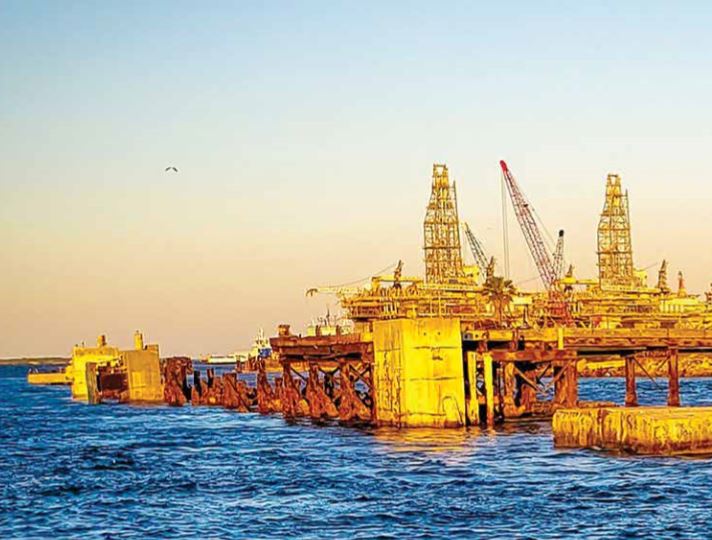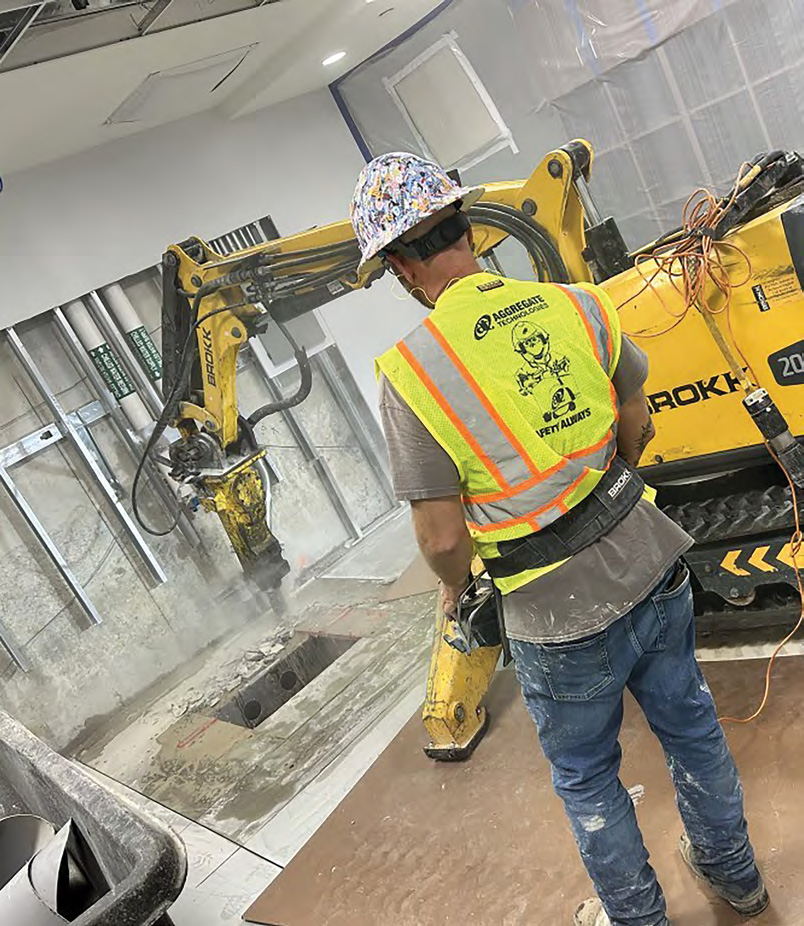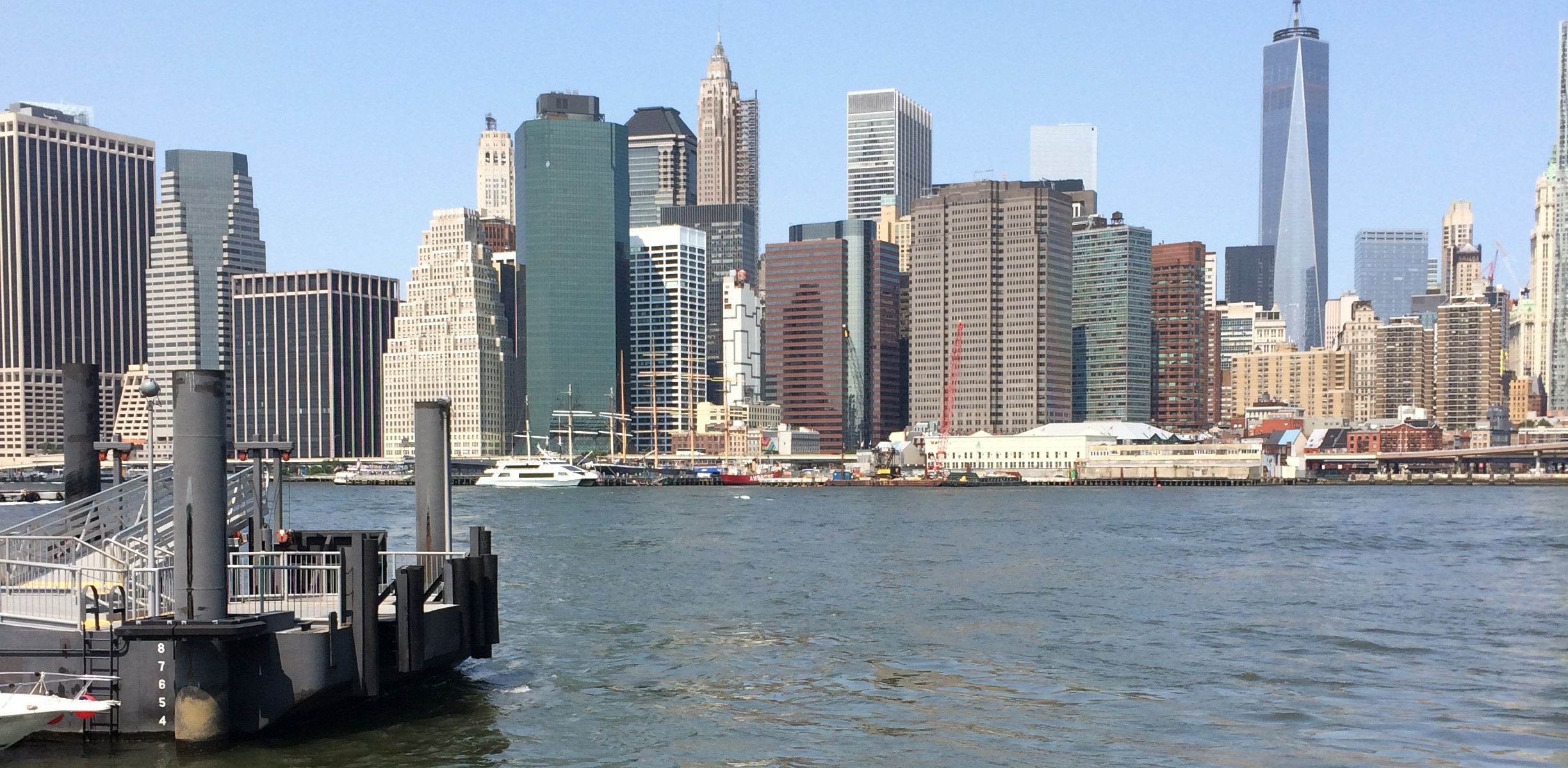
CSDA Contractor Slices Through 2,000 Tons of Concrete at Texas Port

Diamond Wire Sawing Tackles Wind, Waves and Weather
The Port of Corpus Christi is the nation’s number one exporter of crude oil and port officials plan to further that dominance by utilizing an additional 250 acres of land on nearby Harbor Island. This new project will allow larger oil tankers to dock by increasing the depth of the shipping channel. Harbor Island is located along the northeast perimeter of Corpus Christi Bay and within the city limits of Aransas Pass and Port Aransas in Texas. Work has already begun to deepen the channel from a maximum depth of 40 feet to depths of up to 54 feet, making it the first port in Texas with a channel deeper than 50 feet. This project is being managed in part by the U.S. Army Corps of Engineers and will cost over $325 million.

The Port of Corpus Christi is the fourth-largest port in the United States
As part of this work, a new desalination facility needs to be constructed to provide non-potable water to the industrial sector, as well as a crude oil export facility. Existing structures on Harbor Island first needed to be demolished, including three loading docks, six concrete mooring structures over water and on land, as well as several concrete and metal buildings, concrete light poles, concrete foundations and miscellaneous concrete and debris strewn across the bottom of the channel—remnants of damage caused by Hurricane Harvey in 2017. General Contractor Derrick Construction was tasked with this project and turned to CSDA member Holes Incorporated to handle the demolition, rigging and hauling away of massive amounts of concrete and metal.
Holes won the job by offering turn-key demolition services. Competing bids did not offer full services, nor did they have the reputation of successfully completing difficult projects like this one. With 47 years of experience, Derrick Construction knew that the Holes operators could be trusted to get this job done right.

Hilti WS15 Wire Saws were set up on barges to make the wire cuts through concrete and steel
Work on the demolition of the existing structures began in January 2019, one week after the general contractor arrived onsite. The first step was to break and haul out a large stockpile of concrete believed to be old tank foundations—about 500 cubic yards of material. Next, the concrete mooring structures needed to be removed. Two were located on land and five over water, making removal challenging. The two mooring structures on land measured 20-feet by 17-feet and 6-feet thick sitting on 28 driven wooden pilings, while the five over water measured from 17-feet by 25-feet and 6-feet thick to 14-feet by 10-feet and 4-feet thick, all sitting on driven steel 3-foot by 16-inch I-beams. Derrick Construction needed the cut pieces to be at or below 80,000 pounds for the barge-mounted crane to be able to lift them safely. All mooring structures were heavily reinforced with the I-beam, pipe, multiple mats of rebar and old river rock, which makes an exceptionally hard concrete. The mooring structures over the water presented an additional challenge. The Holes team had determined along with the general contractor that wire sawing was the best method for cutting and removal, but the wire sawing would need to be done from a barge on the water. The rapid currents and fluctuating tides, along with constant wakes from large ships passing made the job even more difficult. Additionally, high winds in the area from passing weather systems of up to 25-32 mph made the barge unstable and sawing almost impossible. Another complication was that the existing concrete on which the wire saw pulleys were mounted on the structure was brittle and deteriorating, and setting anchors was extremely difficult. This deterioration also eliminated the possibility of using torches for cutting the I-beams, as the structural integrity of the piers were questionable. Running the wire saw under the beams to complete the cuts was the safest, quickest and most efficient method to free the mooring structures for removal.
The Holes team was able to set the pulleys and wire as needed and get started. Hilti WS15 wire saws were used with wire of varying lengths from DDM, Husqvarna and Hilti. The moorings were sliced like a loaf of bread, leaving the I-beams below in place until all above-water cutting was completed. Once the wire sawing above the water level was done, operators began drilling two-inch diameter holes 24-inches deep in each “slice of bread” for rigging. Each “slice” was then individually rigged to the crane and the cuts could be made underwater through the three foot by 16-inch I-beams to free the structure from the pile. The underwater wire routing was handled by divers employed by the general contractor. One by one, the sections were cut free, lifted out by crane and loaded on to a barge to be transported to land.

Wire saw operators had to be conscious of several complicating factors, including large waves, strong tides, fog and high winds
Also needing demolition were three loading docks. The docks were built between 1912 and 2000 and extended over the water on 60- to 85-foot long I-beams that were driven into the clay on the bottom of the channel. Some of the older docks were built on driven wooden pilings. All three docks and related structures needed to be completely removed. Other structures needing removal were large metal buildings, concrete and metal foundations and concrete light poles. All of the land-based structures were demolished by the general contractor, with wire sawing assistance from Holes where needed, while Holes was responsible for the concrete breaking and separating materials to be sent for recycling and reuse.
Holes operators were able to pull double duty on this job – while the wire saw crew was busy at work on the over and underwater cutting on the mooring structures and piers, the heavy equipment team was breaking and removing the cut concrete on land. After being transported to land, the concrete was unloaded and a 400 Komatsu with a 3,000 pound wrecking ball was used to break up the concrete and load it into 18-wheeler dump trucks. The broken concrete was sent to a local concrete crusher where the rebar and I-beams were separated out, and the metal was sent to a recycling facility. The crushed concrete was then reused as base material for the area. In the end, 2,000 tons of concrete was removed by the Holes team, and 1,790 tons of steel was removed and recycled.

Rigged sections of concrete weighing up to 80,000 pounds were lifted out by crane
The Holes wire sawing team successfully completed over 2,200 square feet of wire sawing. This was accomplished despite several challenges thrown at the team by both the concrete and Mother Nature. Debris, rebar and other structural steel wreaked havoc on the wire used and required many different types and lengths of wire on this job. The team also had to contend with high winds, high waves, strong currents and thick fog on most mornings. Winds above 20 mph or heavy fog would require a delay in starting work for the day, but the team was able to stay on schedule. Each morning, each team member would complete a Job Hazard Analysis (JHA) and had the ability to stop work if conditions became unsafe. The JHAs, along with daily safety talks using CSDA Toolbox Safety Tips (TSTs) and special life jackets that allowed for better operator movement while setting anchors, securing pulleys or just moving around in general contributed to the successful safe completion of this job. All other standard PPE was worn by operators at all times.
“I’ve never seen guys make such light work of concrete before,” said Roy “Moose” Johnson, owner of Derrick Construction. “The Holes crew used their equipment like an extension of their arms. It was a pleasure working with such professional folks that know their job so well. We look forward to working with Holes again on future projects.”

Deteriorating steel and concrete sections of the old moorings were lifted out by crane and transferred to land, where the concrete was crushed, and metal was separated out for recycling
Bryan Anthony, Regional Manager for Holes South Texas echoed the general contractor’s satisfaction with the job. “I was very satisfied with the outcome of this job. The job was completed safely, on time and on budget. Our wire saw team did an outstanding job and we look forward to future projects with Derrick Construction.” He continued, “The others that competed for this project did not offer all the services we do. Derrick was looking for a turnkey concrete demolition company who could cut, rig, break and haul away. They knew this would be a difficult job, but we had several meetings with them prior to being awarded the work. They were impressed with our team’s knowledge and experience. We can cut it!”
The Harbor Island demolition project is projected to be completed in June 2019. Once again, the combination of a CSDA contractor’s experience and reputation along with the reliability, safety and versatility of diamond tools ensured project success and another happy customer.
Company Profile
The Holes Companies are service companies specializing in concrete slab sawing, core drilling, wall sawing, wire sawing, pile cutting, concrete breaking, lifting, demolition, GPR scanning, load and haul and anchor bolt installation. The Holes Companies primarily work for commercial and industrial contractors, state highway departments and municipalities. Holes Incorporated, Holes Golden Triangle, LLC, Holes South Texas, LLC and Holes Technology, LP have built a solid track record through 47 years of experience, reliability and reputation. They have 52 employees and 28 operators and have been CSDA members since 1976.

Holes operator Bryan Cheek stands by one of the sections cut out by wire saw














